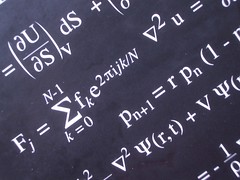 |
In a preprint `The Graded Differential Geometry of Mixed Symmetry Tensors , Eduardo Ibarguengoytia and I describe how one use the recently developed theory of \(\mathbb{Z}^n_2\)-manifolds [1]. |
Background
Differential forms are covariant tensor fields that are completely antisymmetric in their indices and it is well-known that supermanifolds offer a neat way to encode such tensors. Mixed symmetry tensor fields are covariant tensors fields are a natural generalisation of differential forms in which the tensors are neither fully symmetric nor antisymmetric. In physics, such tensor fields appear in the context of higher spin fields and dual gravitons. In particular, the particle spectrum of string theory contains beyond the massless particles of the effective supergravity theory, an infinite tower of massive particles of ever higher spin. Thus, if one wants to consider the effective theory beyond the effective supergravity theory, one is forced to contend with mixed symmetry tensors. The first study of mixed symmetry tensors field from a physics perspective was Curtright [2] who developed a generalised version of gauge theory using higher rank tensors. It was Hull [3] who suggested that such fields, in particular, the dual gravition and double dual gravition, maybe useful in probing various aspects of M-theory.
Recently, Chatzistavrakidis, Khoo, Roest, & Schupp [4] used a “generalised supermanifold” in which we have two sets of anticommuting coordinates which mutually commute in order to describe certain mixed symmetry tensors. It turns out that they are unknowingly using particular \(\mathbb{Z}^2_2\)-manifolds!
Our contribution
In our short note (6 pages), we highlight the use of \(\mathbb{Z}^2_2\)-manifolds to describe mixed symmetry tensors with two blocks of antisymmetric indices. We show that many of the known expressions involving Curtright’s dual gravition in five dimensions can be neatly expressed using these higher graded manifolds. We briefly discuss the flat space-time situation and the case of curved space-times where we really do see some differences as compared with the theory of standard differential forms. We hope that this observation could be useful to others working in string theory and related topics.
References
[1] Covolo, T., Grabowski, J. & Poncin, N., The category of \(\mathbb{Z}^n_2\)-supermanifolds, J. Math. Phys. 57 (2016), no. 7, 073503, 16 pp.
[2] Curtright, T., Generalized gauge fields, Physics Letters B. 165 (1985), 304–308.
[3] Hull, C.M., Strongly coupled gravity and duality, Nuclear Phys. B 583 (2000), no. 1-2, 237–259.
[4] Chatzistavrakidis, A., Khoo, F.S., Roest, D. & Schupp, P., Tensor Galileons and gravity, J. High Energy Phys.(2017), no.3, 070.